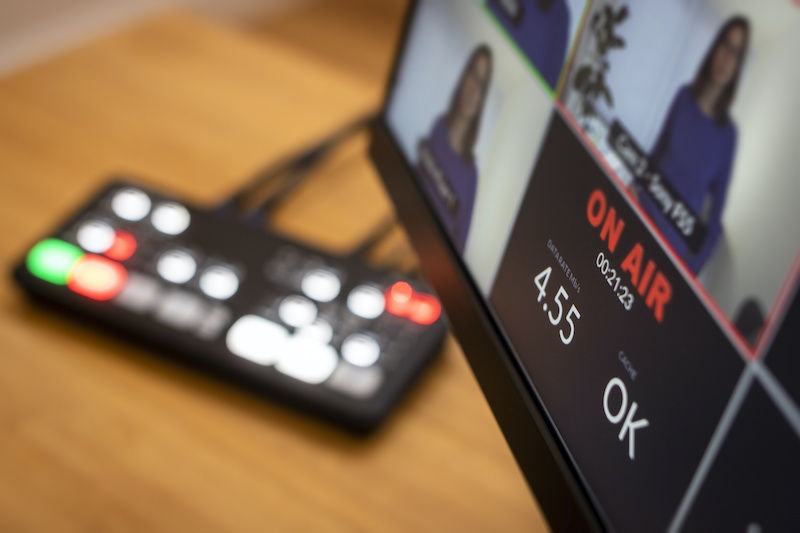Best H.264 Streaming Media Encoders!
- Videolinq Staff

- Jan 2, 2020
- 3 min read
Selecting the right media encoder for your streaming project can be complicated. There are so many options and pricing to choose from. This article will highlight few options and use cases.
Hardware or Software?
There are two options to use a media encoder: use a hardware standalone "appliance", or purchase a software encoding tool and install it on your computer or tablet. The first option frees up the need to use a computer. Encoding appliances are self contained systems: you connect the source of your video, configure the system to point to a media server or streaming service, and control via external push button when the system start and stop streaming. Hardware encoders cost between $500 to $5000. Software encoders cost less than a hardware encoder. Some even are free. Software encoders depend on a capture device (cost range from $150 to $2500) to capture the video signal, insert it to the host computer (Windows or Mac), and once configured, the software encoder will stream out the broadcast to the target streaming service or platform of choice. Processing HD or 4K video signal requires lot of resources. Computers that can handle HD/4K video cost between $1000 to $4000. The most popular streaming software encoder is the free OBS Studio. Paid popular software encoders include vMix, and Telestream Wirecast.
HDMI or HDSDI, HD or 4K
Next consideration would be to select a streaming appliance or capture device that can connect to the video source. Low cost cameras only have HDMI ports. Prosumer cameras have normally both HDMI and HDSDI ports. The advantage of using a camera with HDSDI port is the ability to run long cables between the camera and the capture device. HDMI cables can deliver HD video up to 25 feet. HDSDI cables can run for few hundred feet with our signal boosting. Cameras that output 4K signal have both HDMI and SDI ports. To use 4K signal, you must purchase a streaming appliance or capture card that support 4K. These devices are more expensive compared to HD units. Only very few streaming providers support 4K streaming. 4K streams require 50 MBps bandwidth. Most people don't have access to this kind of network yet, meaning streaming live video at 4K resolution will not reach the majority of your audience. We recommend that you stream at maximum 1080p resolution.
Buy an Encoder for next 2 years
The fast pace of technology development force hardware manufactures to release new products every 1-2 years. This means that new hardware encoders access the market rapidly, force competing companies to drop prices, and make system obsolete after a short period of time. There is no need to buy expensive encoders. Plan on buying an encoder that will last for 2-3 years.
H.264 Encoders Use Cases
Broadcasters that stream 24/7 buy encoders that have internal cooling systems. A portable encoder without proper cooling heat up quickly and drops video quality. Matrox Monarch HD, Videon VersaStreamer, and Teradek VidiU Pro are good entry level HDMI only encoders under $995.00. Entry level encoders are perfect for House of Faith or low-end production where the budget does not compromise on the quality.
Mid-level encoders support both HDMI and HDSDI inputs. These encoders also offer file recording of the broadcast to built in SD card slots (cards not included), or connected USB hard drives or LAN. Popular encoders include Aja Helo, Teradek Cube, and Matrox Monarch HDX. These encoders are popular among professional live production houses, government agencies, and traditional TV stations.
Hands Free Live Stream Scheduling: most H.264 encoders don't have a scheduling feature. Use Videolinq's Scheduler to configure a H.264 encoder to start and stop a live broadcast at a specific date and time!
Top of the H.264 encoders list includes systems that have extra features such as the Matrox Monarch LCS (dual channel encoder with ability to capture and mix 2 video sources), Teradek Slice (a 24/7 streaming rack mounted encoder), and the Epiphany Pearl Series (a 2-channel capture and mixing streaming appliance). These encoders are deployed by professional TV stations, universities, large enterprises, and government agencies.
In Conclusion
Purchase the H.264 encoder that best fit your production environment and workflow requirements. We recommend buying a media encoder appliance and not software encoders. Try to minimize risk to your broadcast by eliminating the components involved the creation of the stream. When using software encoders workflows include a capture device, a computer, and software. A streaming appliance is a standalone product that requires one time configuration and afterwards just a Start/Stop action. The less components involved, the little the risk of failure. Happy streaming!
Did you find this article helpful? Open a video trial account to stream from your media encoder to multiple social media platforms!








